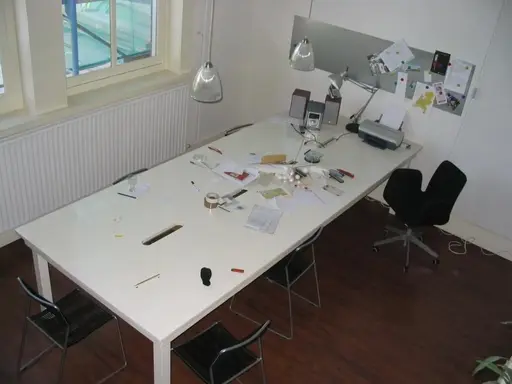Dovile Tumpyte
curator, Vilnius
Dovile Tumpyte (born 1978) is a curator who studied art history at the Vilnius Art Academy, Lithuania, where she received her Master’s degree in Art Theory and Criticism in 2005. She is currently curator of the Contemporary Art Information Center of
Dovile Tumpyte (born 1978) is a curator who studied art history at the Vilnius Art Academy, Lithuania, where she received her Master’s degree in Art Theory and Criticism in 2005. She is currently curator of the Contemporary Art Information Center of the Lithuanian Art Museum. Recent curatorial projects (selection): iMagine, 2nd event of Preparation Programme for Young Artists Biennale in Tallinn and Vilnius, 2007; Selfobjects, Radvila Palace, Vilnius, 2006; The Shifts of Cultural Landscapes. Cities after the break: Klaipeda, Kaliningrad, Gdansk, Xth Thomas Mann festival, Nida, 2006; and Vanishing Point, ARTima gallery, Vilnius, 2006. Tumpyte lives and works in Vilnius.Self-organized Art Space in the NetherlandsIn the Lithuanian contemporary art scene, an institution such as the Contemporary Art Centre in Vilnius has played a dominant and exclusive role in producing and presenting contemporary art projects since 1989. However, recently young theoreticians, curators, and artists have begun to organize (temporary) collectives and actively participate in the local art scene with their projects, employing different strategies of production and distribution in their objectives than the main art institutions. Against this background, Tumpyte conducted a research project entitled Bridge the Balkans to the Baltics (BBB). The project aimed to examine the self-organized art spaces in the former Yugoslav republics and initiate a collaborative project between two East European regions based on self-organized activities.Tumpyte extends this exploration into the Dutch art context, which is dominated by a well-established institutional and governmental infrastructure for art and culture. She seeks to find various examples of self-organized art initiatives in the Netherlands and reflects on their relational positions with regard to art institutions such as the Rijksakademie, de Ateliers, de Appel, and Van Abbemuseum, focusing on different strategies of art production and its specific critical role in the local art scene and beyond. The position of BAK is also an object of investigation from this perspective.
